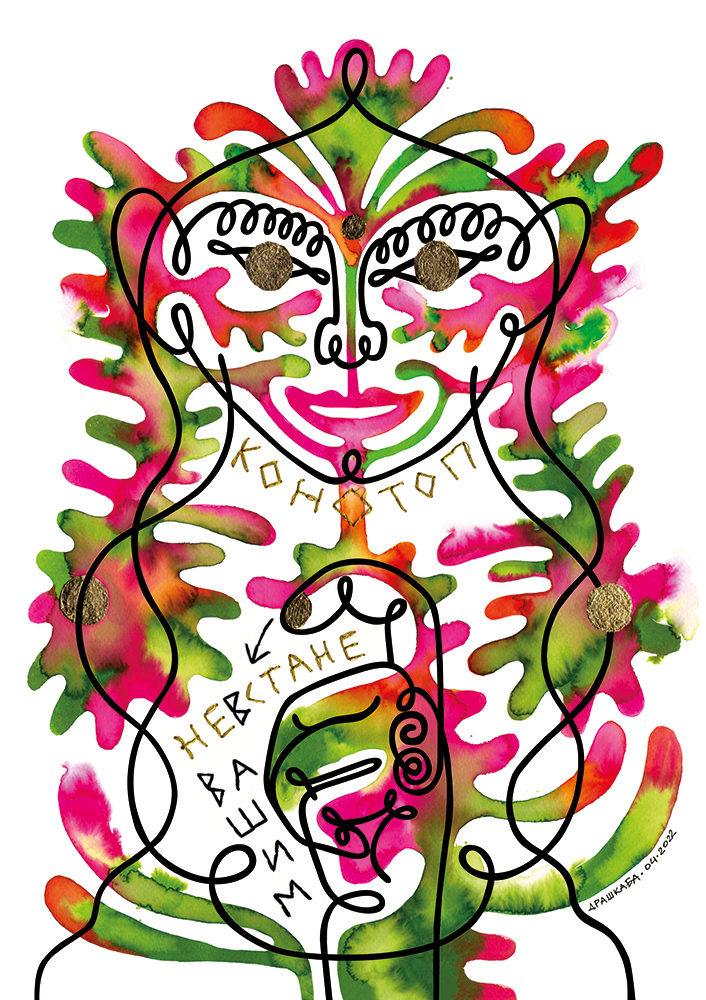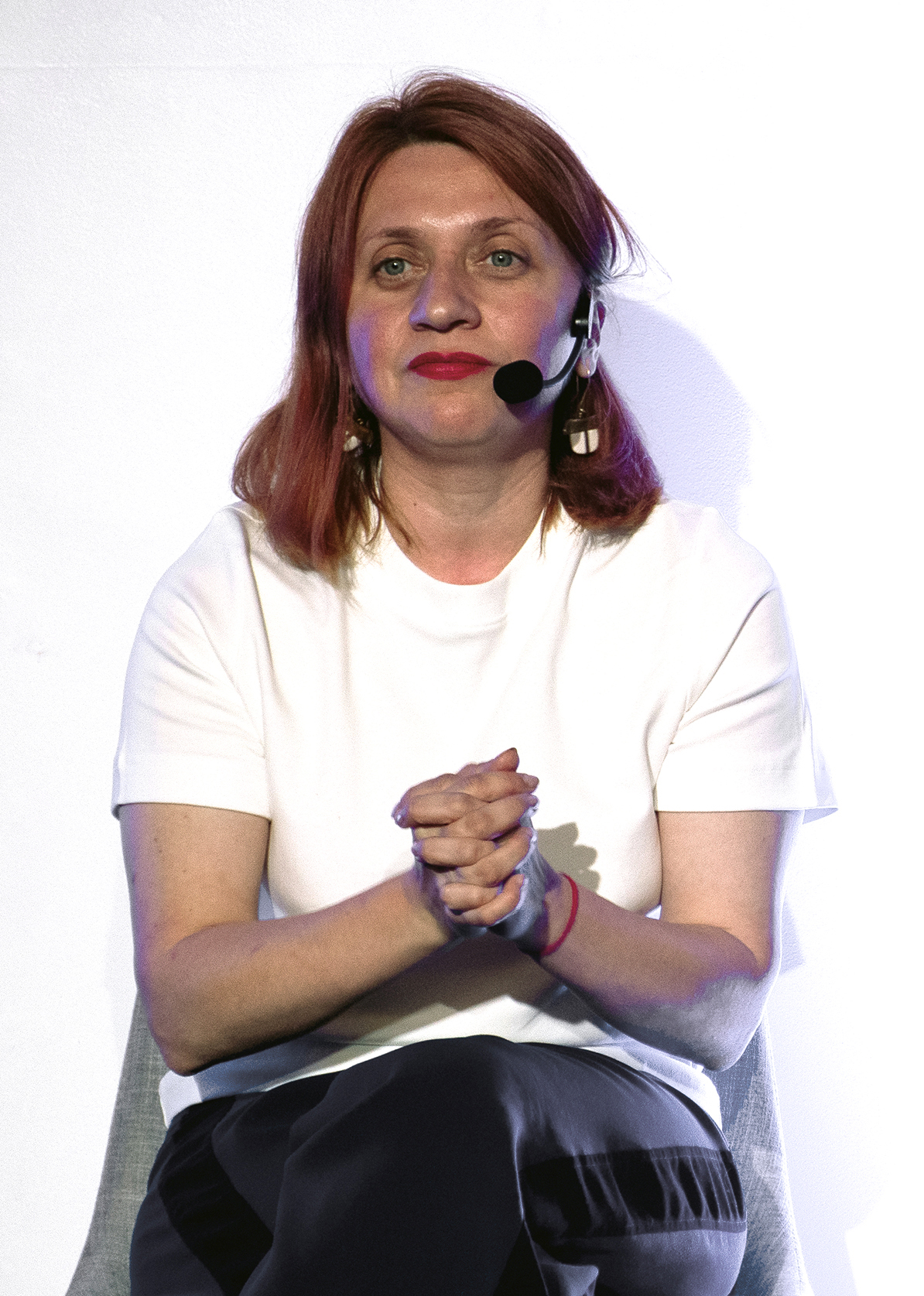WAR IN EUROPE
Ukrainian ‘The Womanly Face of War’ exhibition visits SA

Six months after Russia invaded Ukraine, we continue to see the daily realities of Ukrainian citizens living in a war. But ‘compassion fatigue’ from watching the news is creeping in. Now, a Ukrainian art collective exhibition has come to South Africa during Women’s Month — hoping to see ‘culture speaking to culture’.
‘People are not statistics, we cannot get used to them dying. There is nothing normal about these millions of lives being disrupted,” said Nataliia Popovych, Ukrainian activist and co-founder of Sunseed Art Collection. “We want to make sure people see a disrupted life or a simple story behind every statistic.”
Sunseed Art is a social initiative Popovych co-founded with artist and curator Olysya Drashkaba at the start of Russia’s invasion of their country. The aim was to enable Ukrainian artists to create artworks and sell prints abroad on a digital platform — allowing them to continue their trade and document the experiences of their fellow citizens. The proceeds go to the artists and several charities in Ukraine.
Drashkaba’s curated The Womanly Face of War exhibition is touring cities in South Africa during Women’s Month, trying to improve public understanding of the war in Ukraine, particularly on women and children.

Olysya Drashkaba depicts the ‘witch’ character, representing strong Ukrainian women who stood up to Russian soldiers when their homeland was invaded, ‘cursing’ them with impotence. (Photo: Sunseed Art)
Drashkaba said, “Beauty and freedom are two components we want to share and inspire people with. We choose the powerful voice of art, this international language, to talk about women’s pain, determination, bravery and utopian hope for justice and peace.”
Popovych said the collaboration between Ukrainian artists and South African civil society — initiated by Desmond and Leah Tutu Legacy Foundation and the Ukrainian Association — hoped to foster “cultural diplomacy” and prompt heart-to-heart dialogue with South African society.
“And eventually that society will be able to influence the position of the South African government, which has so far been slow to condemn Russia’s aggression against Ukraine.”
The Womanly Face of War is based on four female artists’ personal perspectives of how the Russian invasion has affected women and girls, including the horrors of sexual and gender-based violence, and how mothers have been forced into perilous roles as fighters and life savers.
Popovych said the exhibition reflected on women’s archetypes in war and the roles they’ve been forced to fill. One artwork explores the role of the female warrior, with 50,000 women serving in the Armed Forces of Ukraine — a very high number in a global context. “Our army now is reformed, and strong, and women actually can take up any rank in the Ukrainian army,” said Popovych.
Other works explore the role of the mother, including mothers-to-be, with Popovych revealing that 165,000 women were pregnant when the war started and 63,000 children have been born into the war.

From left: Nataliia Popovych, Ukrainian activist and co-founder of Sunseed Art, Olysya Drashkaba, Ukrainian artist, curator and co-founder of Sunseed Art, Annah Moyo-Kupeta, South African human rights lawyer and executive director of the Centre for the Study of Violence and Reconciliation, and Janet Jobson, CEO of the Desmond and Leah Tutu Legacy Foundation. (Photo: Julia Evans)
“How does it change your outlook if, all of a sudden, you have to give birth and you don’t know which hospital is going to be even functioning?” asked Popovych. “Some women have had to give birth in bomb shelters.”
The role of mothers
The war has seen the role of a mother changing and, as a mother of three herself, Popovych has experienced this. “[When a bomb air alert goes off] our first thought is not what are you doing at work?” she said. “It’s, ‘Where are my children? How do I take children to school? Where do I educate them? Is it safe for them to be in my own home?’ ”
One of Drashkaba’s works explores the role of a witch. In Ukrainian literature, a witch is a very wise woman who can be consulted on different issues and is a guardian of village traditions. Popovych said stories of Ukrainian witches show, “Even throughout the war, that has given us a little bit of humour, maybe, and shown the strength and resiliency of Ukrainian women.”
In a powerful, comic piece, Drashkaba illustrates the story of a Ukrainian woman who said to Russian soldiers at the beginning of the war, “Do you know where you are now? This is Konotop! Every woman here is a witch!” and threatened them with the curse of impotence. The woman’s bent finger, illustrating the curse, is depicted in Drashdaba’s work.
Visit Daily Maverick’s home page for more news, analysis and investigations
This story shows how, “Ukrainian women are strong enough to come up even to people who are armed, because they stand on their own land, and they’re like, ‘You should not be here. What are you doing here? This is my land.’ ”
The name Sunseed Art honours a woman from Henichesk in the Kherson region, who approached a Russian soldier on 24 February 2022 — the day of the invasion — and handed him sunflower seeds, saying, “You came to my land with weapons. At least put some seeds into your pockets so that the sunflowers will grow out of you later.”
“This speaks to the courage of people who were stopping tanks with their own hands — completely without being armed — because they felt the strength of standing on their own land,” said Popvych.
Culture speaking to culture
At the launch of the exhibition at The Trevor Huddleston CR Memorial Centre in Sophiatown, Johannesburg, Janet Jobson, CEO of the Desmond and Leah Tutu Legacy Foundation, said art could cut through “the noise”, and fighting against human rights atrocities was something South Africans could relate to.
“When you think about the values underlying culture and art, there is obvious proximity between Ukraine and South Africa,” said Popovych, adding that social connections were a way to bring together people closer who would otherwise be thousands of kilometres apart.
“I think there is much more proximity between Ukraine’s fight for freedom and South African freedom than there ever could be between misplaced loyalty towards Russia,” said Popovych. “Because nothing in Russian culture is similar to South Africa; it’s been imperial for years and for centuries, a culture that has always been very aggressive, very brutal.”

Olysya Drashkaba is a Ukrainian artist, curator and co-founder of Sunseed Art. She specially curated ‘The Womanly Face of War’ exhibition for the tour of South Africa. (Photo: Julia Evans)
Popovych said that, since the war began, 27,000 war crimes had been reported — including the bombing of residential areas and Russian soldiers raping Ukrainian women while telling them they would not have any more Ukrainian children.
Annah Moyo-Kupeta, a South African human rights lawyer and executive director of the Centre for the Study of Violence and Reconciliation, said at the launch, “Too often, women are subjected to the worst excesses of war and conflict and the most egregious human rights violations. This is happening in Ukraine now, as it has happened and continues to happen in a number of countries across the African continent for many years.
“Fostering solidarity and understanding across nations is crucial to tackling issues of gender-based violence and the impact of war on women and girls. I’m confident that my South African sisters and brothers will be as keen as I am to show that solidarity.” DM
Where to see the exhibition:
- The Trevor Huddleston CR Memorial Centre in Sophiatown, Johannesburg (12-16 August, 09.00-17.00 daily).
- The Desmond and Leah Tutu Museum in Cape Town (18-25 August, 09.30-15.30 daily).
- Durban in early September (exact date and location TBC).
Entry: Free; donations welcome (all profits go towards humanitarian efforts in Ukraine).



















 Become an Insider
Become an Insider
Comments - Please login in order to comment.